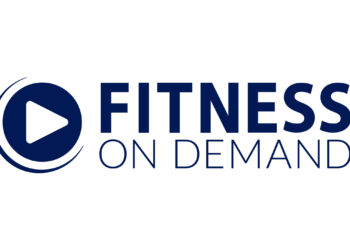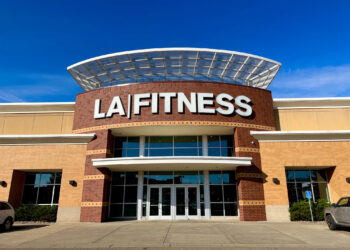Over the past few years, coworking businesses like WeWork and Impact Hub have boomed as a direct response to the needs of today’s average worker, who requires the ability to work at anytime, from anywhere.
According to Coworking Resources, “The number of coworking spaces worldwide in 2018 doubled from 2015’s total. This tells us that coworking is more than a fad; it’s an unstoppable international phenomenon.”
Many health clubs have taken notice of this trend, and are now incorporating coworking spaces into their facilities, where members can charge their devices and work on-the-go before or after their workouts.
In fact, MVP Sports Clubs has even launched its own coworking spin-off — Work-Space by MVP — as an added benefit to its All-Star membership.
“Our Work-Space product is a value-added product that is included in our All-Star membership, which provides you with access to all of our clubs in our system for a premium price,” explained Karl Droppers, the president of MVP Sports Clubs.
Currently there are two Work-Space by MVP locations — one in Grand Rapids, Michigan and the other in Orlando, Florida. Each boasts casual and open work spaces, high-speed Wi-Fi, and a coffee, tea and water bar. In addition, members gain access to networking opportunities, educational and social events, a community learning library, free parking and childcare.
“We see this as a great differentiator, as an add-on to the All-Star membership,” added Droppers.
According to Droppers, the spin-off came about in response to a growing need for MVP members to have dedicated space in which to work. “We saw greater demand for community space and places throughout our clubs where members were gathered or looking for space to get some work done before or after a workout,” he said.
When asked what advice he could share with other gym operators looking to incorporate coworking spaces, Droppers shared it’s important to understand the “why” behind the project.
“As with anything in life or business, what’s the ‘why?’” stated Droppers. “If you can figure out the ‘why’ of the product and program, you can begin to build it and market it to individuals. We have a tremendous market of people that come into our buildings each day that are looking for places to get connected and to get work done.”
Bonus Insight:
CS: What have been the biggest learning lessons with this project?
KD: To manage cost we needed to hire someone that could put together an esthetically pleasing space within a budget, but not make it too corporate. We used a number of manufacturers, as well as a custom table builder to make a unique space. You also need to balance private, open and casual spaces for clients.
Stay ahead in the fitness industry with exclusive updates!
Rachel Zabonick-Chonko is the editor-in-chief of Club Solutions Magazine. She can be reached at rachel@peakemedia.com.











